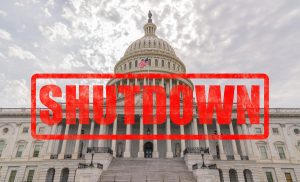In an era where financial transparency in government entities is essential, the Governmental Accounting Standards Board (GASB) has introduced Statement No. 103 – a transformative directive poised to refine the financial reporting model. This pivotal statement is designed to enhance the model’s effectiveness, ensuring that it serves as a tool for decision-making and a benchmark for assessing government accountability. So – what does that mean?
Cleaner Financial Narratives: Management’s Discussion and Analysis (MD&A)
The MD&A emerges as the primary focal point of the financial report, still required to precede the basic financial statements. This section is now further refined to be a more analytical, and explanatory narrative, shedding light on the government’s financial activities with precision and objectivity. It is tasked with making clear to the readers the nuances of fiscal changes, offering insights into the operational shifts that underpin the financial figures. The MD&A’s refined focus is to distill complex financial data into a coherent story, one that articulates the government’s fiscal trajectory and strategic initiatives.
Updates to Certain Presentations and Disclosures
GASB 103 also brings some changes in the presentation and disclosure of certain financial information. It introduces a clear demarcation of unusual or infrequent items, ensuring that these events are not lost in the financial shuffle but are instead highlighted for their impact on the government’s fiscal health. The distinction between operating and nonoperating revenues and expenses in proprietary fund statements is now more pronounced, providing stakeholders with a clearer understanding of the government’s operational efficiency.
Furthermore, the document mandates a separate presentation of major component unit information, allowing for a granular view of each unit’s financial standing. The requirement for budgetary comparison information to be presented as required supplementary information (RSI) is a significant shift, emphasizing the need for governments to contextualize their budgetary practices and explain variances that may indicate fiscal trends or policy shifts.
The Road Ahead: Implementation and Impact
As we approach the effective date for these new standards, set for fiscal years beginning after June 15, 2025, it is more important than ever to get an understanding of this important GASB and how it will change financial reporting requirements. The implementation of Statement No. 103 is expected to have far-reaching implications, to help foster a culture of accountability and informed decision-making. It is a step towards a future where financial reports are not merely collections of numbers but are narratives that reflect the government’s commitment to fiscal stewardship and the public interest. As always, your advisors at LSL CPA’s are ready to assist with any questions about the implementation of this new GASB!
Author
-
As an assurance partner, Ryan oversees engagements for a variety of governmental clients, providing accounting guidance and other services, including audits, consulting, and ACFR preparation, with a high level of care and precision. He is also involved in training new staff members, and acts as a mentor and resource to both his clients and his team. Read Ryan's full bio.




